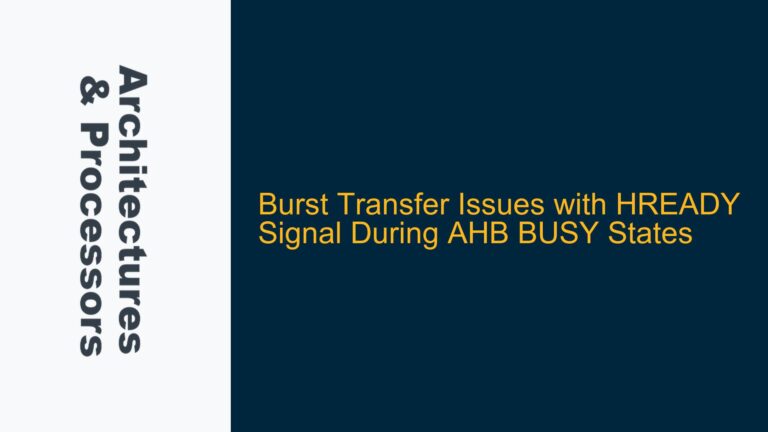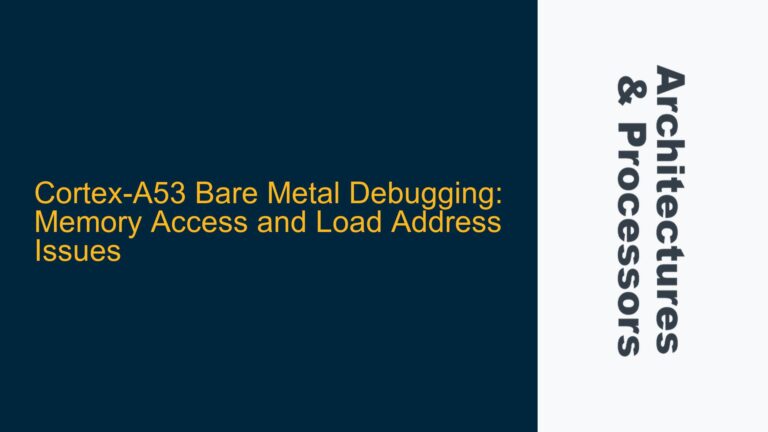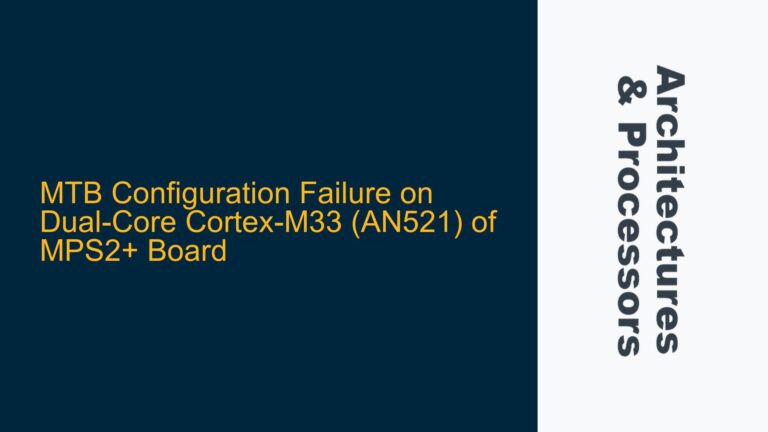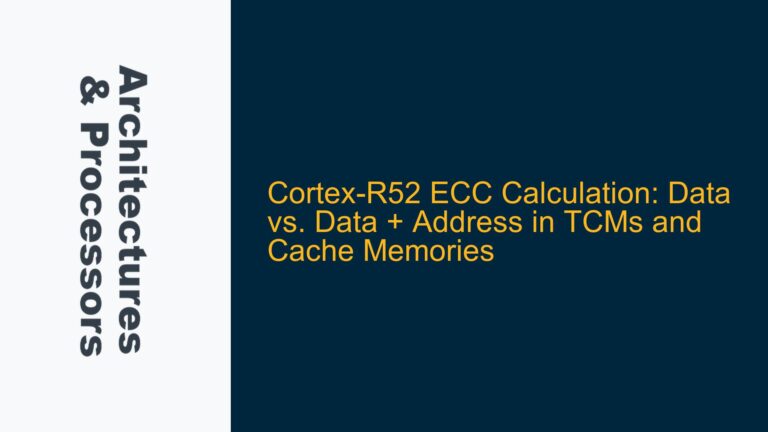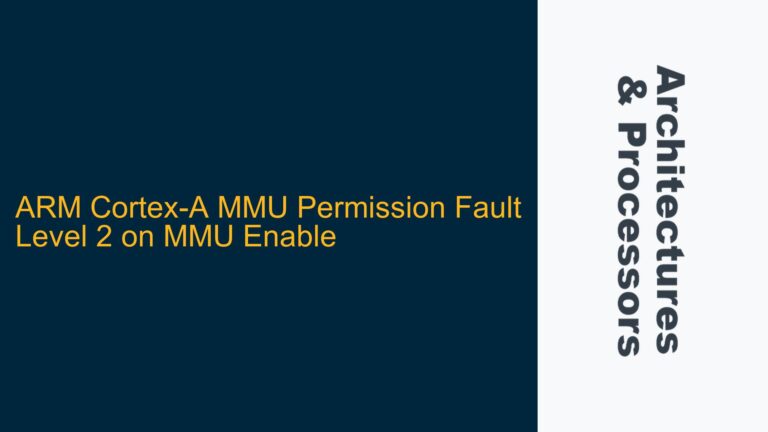Understanding the Role of PORESETn, SYSRESETn, and DAPRESETn in Cortex-M3 Debugging
The Cortex-M3 processor, as outlined in the Technical Reference Manual (TRM) r2p0 (Issue H), incorporates three distinct reset signals: PORESETn, SYSRESETn, and DAPRESETn. Each of these signals serves a unique purpose in the reset and debugging architecture of the processor. PORESETn, or Power-On Reset, is typically used to initialize the system after power-up, ensuring that all registers and memory are in a known state. SYSRESETn, or System Reset, is a general reset signal that can be triggered by software or external hardware to reset the entire system. DAPRESETn, or Debug Access Port Reset, is specifically related to the debugging interface, resetting the Debug Access Port (DAP) and associated debugging logic.
In a System-on-Chip (SoC) design, the decision to include or exclude these reset signals can have significant implications for the functionality of the debugger. The primary concern is whether the debugger can operate correctly if only SYSRESETn is provided, while PORESETn and DAPRESETn are internally pulled up and deasserted. This configuration would reduce the number of terminals required on the SoC, potentially simplifying the design and reducing cost. However, it is crucial to understand the dependencies and interactions between these reset signals to ensure that the debugger can function as intended.
Implications of Omitting PORESETn and DAPRESETn in SoC Design
The omission of PORESETn and DAPRESETn in an SoC design, with only SYSRESETn being actively controlled, raises several potential issues that could impact the debugger’s functionality. PORESETn is typically used during the initial power-up sequence to ensure that the processor and its peripherals are properly initialized. If PORESETn is not explicitly controlled, the system may rely on SYSRESETn to perform this initialization. However, SYSRESETn may not provide the same level of initialization as PORESETn, particularly in complex systems where multiple power domains are involved.
DAPRESETn, on the other hand, is critical for the proper operation of the debugger. The Debug Access Port (DAP) is responsible for managing the communication between the debugger and the processor. If DAPRESETn is not properly controlled, the DAP may not be correctly initialized, leading to issues such as the debugger being unable to connect to the processor or failing to halt the processor when requested. Additionally, the timing of the DAPRESETn signal relative to other reset signals can be crucial, as improper timing may result in the DAP being in an undefined state during critical debugging operations.
Another consideration is the interaction between the reset signals and the processor’s internal state machines. The Cortex-M3 processor has several state machines that manage the reset sequence, power-down modes, and debugging operations. If PORESETn and DAPRESETn are not properly controlled, these state machines may not transition correctly, leading to unpredictable behavior. For example, if the processor enters a low-power mode and then needs to be woken up for debugging, the absence of PORESETn and DAPRESETn could prevent the processor from exiting the low-power mode correctly.
Ensuring Proper Debugger Functionality with Controlled Reset Signals
To ensure that the debugger functions correctly in an SoC design where only SYSRESETn is actively controlled, several steps must be taken to address the potential issues arising from the omission of PORESETn and DAPRESETn. First, it is essential to thoroughly understand the reset sequence and the role of each reset signal in the Cortex-M3 processor. This understanding will guide the design of the reset circuitry and the timing of the reset signals.
One approach is to use SYSRESETn to emulate the functionality of PORESETn and DAPRESETn. This can be achieved by carefully designing the reset circuitry to ensure that SYSRESETn triggers the necessary initialization sequences for both the processor and the DAP. However, this approach requires a deep understanding of the processor’s internal state machines and the timing requirements of the reset signals. It may also require additional logic to ensure that the DAP is properly initialized before the debugger attempts to connect to the processor.
Another approach is to use a combination of hardware and software to manage the reset signals. For example, the SoC could include a reset controller that generates the necessary reset signals based on the system’s state. The reset controller could be programmed to assert PORESETn and DAPRESETn at the appropriate times, even if these signals are not directly controlled by external pins. This approach would require careful coordination between the hardware and software teams to ensure that the reset controller is correctly programmed and that the timing of the reset signals meets the processor’s requirements.
In addition to designing the reset circuitry, it is important to thoroughly test the debugger’s functionality in the SoC. This testing should include scenarios where the processor is reset, enters low-power modes, and is woken up for debugging. The testing should also cover different configurations of the reset signals to ensure that the debugger can connect to the processor and perform debugging operations reliably. Any issues identified during testing should be carefully analyzed to determine whether they are related to the reset signals and whether additional design changes are needed.
Finally, it is important to consider the impact of the reset signal configuration on the overall system design. While reducing the number of terminals on the SoC can simplify the design and reduce cost, it is essential to ensure that this simplification does not compromise the functionality of the debugger or the reliability of the system. In some cases, it may be necessary to include additional terminals or logic to ensure that the reset signals are properly controlled and that the debugger can function correctly.
In conclusion, the decision to omit PORESETn and DAPRESETn in an SoC design, with only SYSRESETn being actively controlled, requires careful consideration of the potential impact on the debugger’s functionality. By thoroughly understanding the role of each reset signal, designing the reset circuitry to emulate the necessary functionality, and thoroughly testing the debugger’s operation, it is possible to ensure that the debugger can function correctly in such a design. However, this approach requires a deep understanding of the Cortex-M3 processor’s architecture and the timing requirements of the reset signals, as well as careful coordination between the hardware and software teams.

